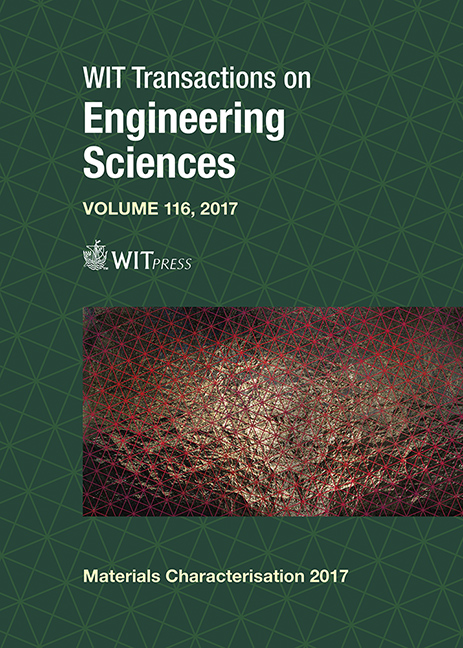NON-DESTRUCTIVE EDDY CURRENT MEASUREMENTS FOR SILICON CARBIDE HETEROSTRUCTURE ANALYSIS
Price
Free (open access)
Transaction
Volume
116
Pages
12
Page Range
49 - 60
Published
2017
Size
942 kb
Paper DOI
10.2495/MC170061
Copyright
WIT Press
Author(s)
ARMEN SAHAKYAN, ANTS KOEL, TOOMAS RANG
Abstract
Heterostructures consisting of two different silicon carbide (SiC) polytypes have been of interest for several years, promising application in the field of UV LEDs and sensors. Direct bonding (also called diffusion welding) is a technology that could possibly be used for manufacturing SiC heterostructures. The technology has been proven in experimental production of power devices for ohmic- and Schottky-contacts to SiC, as well as high-voltage stacks. The fabrication of heterostructures has not been successful yet, due to the hardness of SiC as well as the high temperature and pressure needed for accomplishing a reliable joint between two SiC polytype wafers. No thorough analysis is available in studying the quality of achieved contacts and the causes for their short breakdown in time. The intention is to try higher temperatures than used before for direct bonding of SiC different polytypes. To understand the contact failure causes there is a need for quick non-destructive measurements of the heterojunction properties in the depth of bonded layers. Eddy currents measurements seems to be the best solution for further investigation. Simulations with COMSOL Multiphysics general-purpose simulator are carried out with different electrode shapes and different electrode placements. The numerical simulation and test equipment building results at the Thomas Johann Seebeck Department of Electronics are analyzed and discussed.
Keywords
SiC heterostructure, direct bonding, eddy currents, non-destructive measurements





